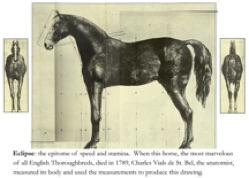Karen Gellman DVM, PhD
Equine Sports Medicine

Karen Gellman DVM, PhD
Equine Sports Medicine



Postural Rehabilitation is an integrative, evidence-based approach to alleviating chronic performance issues and preventing musculo-skeletal injury.
Most back and neck pain is caused by compensatory postures that put strain upon the spinal support system in order to maintain an upright position in a horse that has impaired reflexes of standing and balance.
Postural rehabilitation restores normal reflexes of standing and gaiting, corrects neural signals informing the brain about the horse’s balance, and prevents tendons, ligaments and muscles from being strained beyond their normal safety margins.
Dr. Gellman uses acupuncture, chiropractic, and physiotherapy along with neurologic reprogramming techniques to alleviate chronic compensations, in both posture and locomotion. These interventions, combined with balanced, accurate foot trim, and therapeutic dentistry, help the horse achieve its true performance potential.
Read more about posture and soundness. Find out about Postural Rehabilitation training courses for licensed professionals.




Does Your animal have any of these issues?


•Reduced neck or back flexibility
•Tail or head held to one side
•Drags one foot
•Paces instead of trots
•Hypersensitivity to grooming
•Uneven gait
•Heavy on bit or lead
•Refuses jumps
•Difficult to shoe or trim toe-nails
•Puppy sitting

Signs of Compensatory Posture


•Cannon bones not at right angles to ground surface
•Won’t stand on all four limbs simultaneously
•Won’t stand or sit symmetrically
•Different hoof size or toe-nail length between limbs
•Asymmetrical head and neck position, including eyes not held level
•Distorted or asymmetrical back contour
•Performance problems
•Chronic or recurrent lameness with no known injury



What is Postural Rehabilitation?

Can you tell the difference between normal and compensatory posture?
